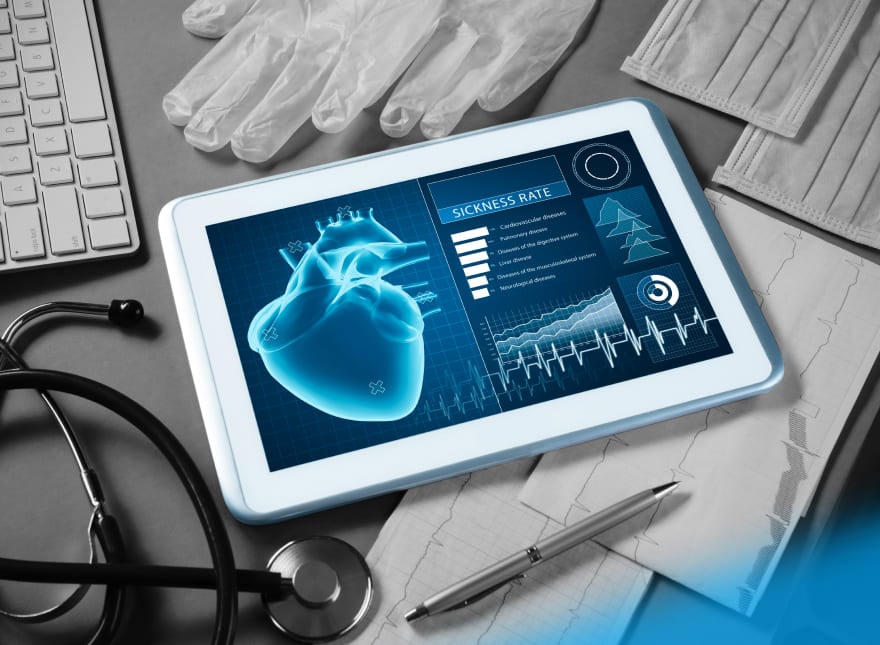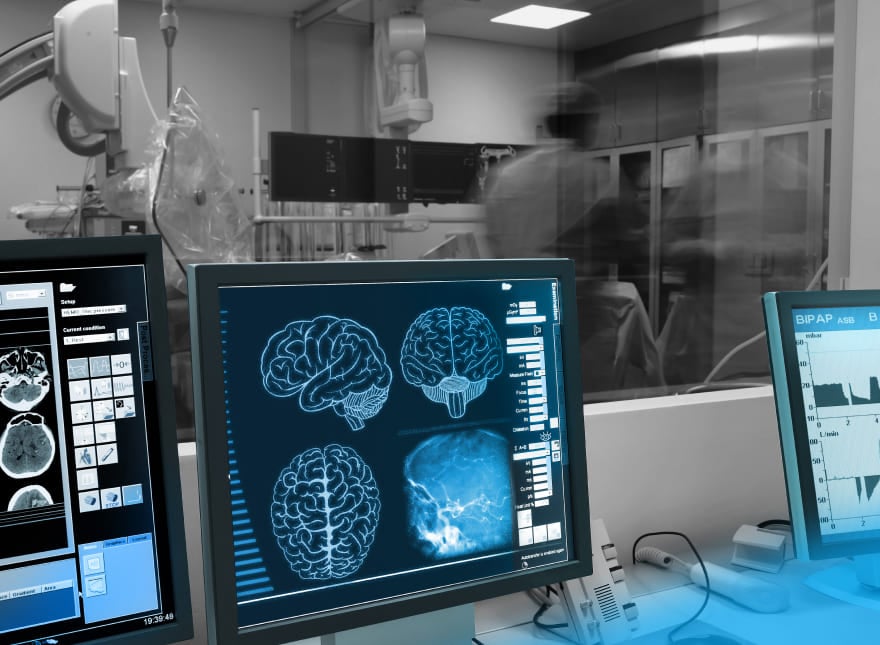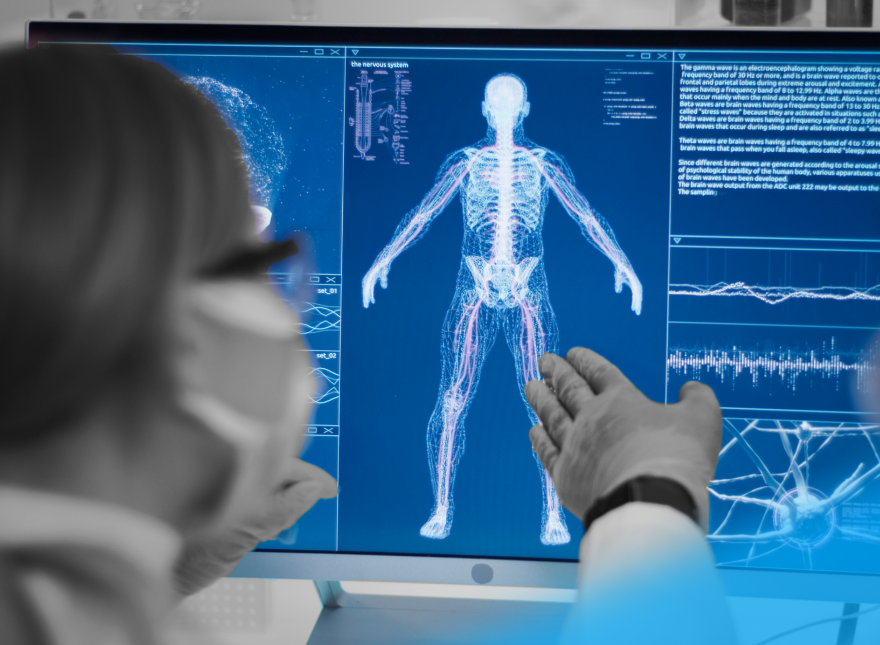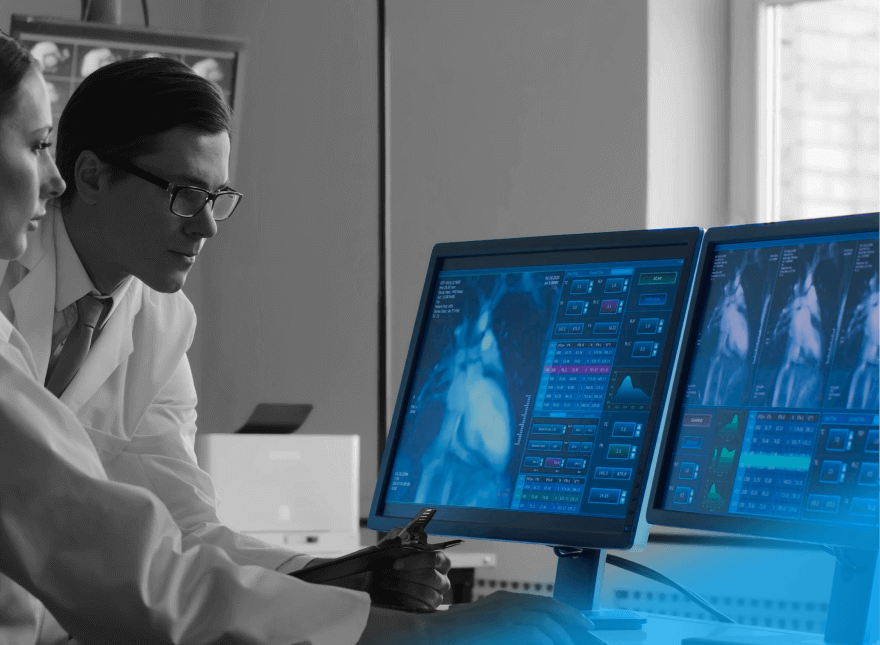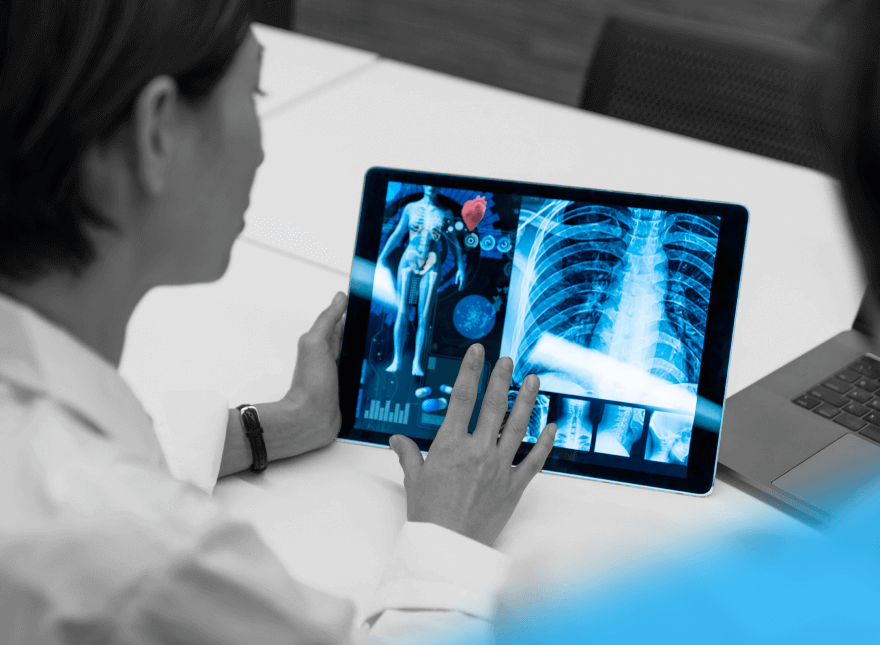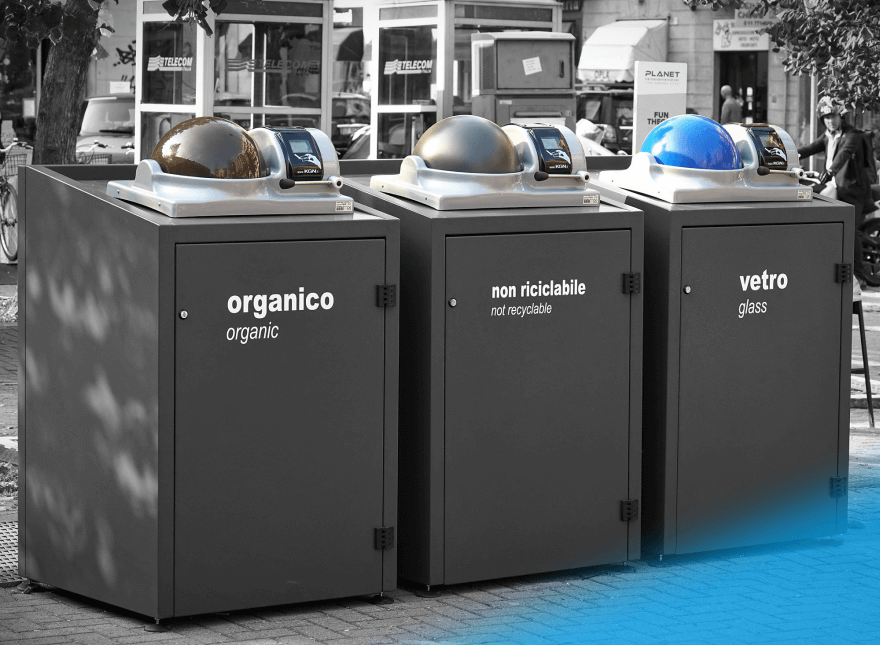Check out our latest blog article: From component to enterprise – modular robotics done right.
Medical Device Startups in Focus: Promising Market Ideas and Industry Trends
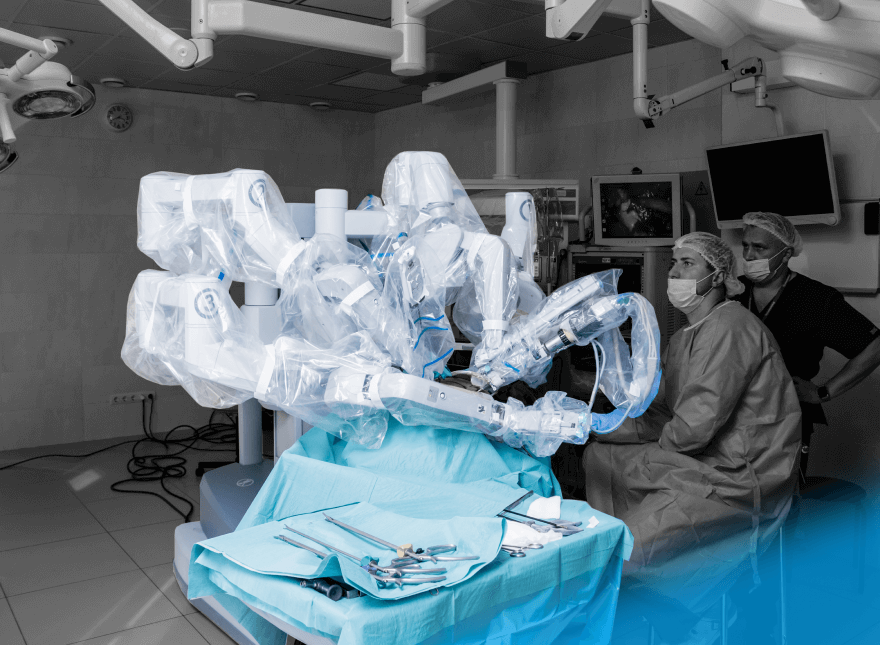
With thousands of medical device startups already operating in the US, you might find it hard to enter the market and beat back the fierce competition. The process of developing the right device is challenging, too. The journey is long, costly, and full of regulations. However, with the perfect market fit and a clever tech approach, startups can not just survive but thrive in this tough landscape.
This article is an overview of promising business opportunities for startups in the medical device market. You’ll find out which key market drivers and areas of use are best to focus on. We’ve also highlighted medtech startups that have already been successful in terms of money and recognition. Your project could be next.
Perspectives and Drivers of the Medical Device Market
The medical device industry is growing slowly but steadily. According to Precedence Research, its global market will hit $850B in 2030, up from $577B in 2022.
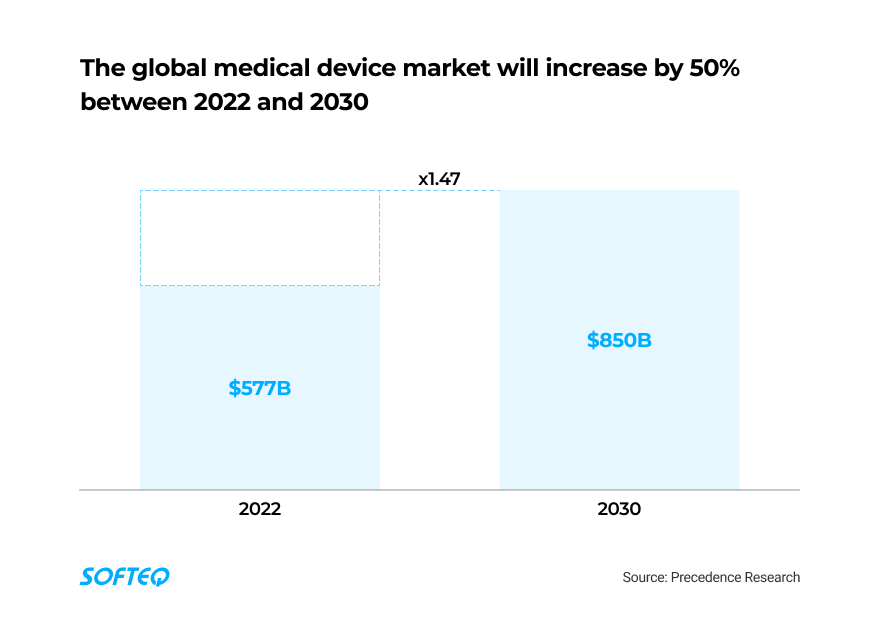
Medtech startups are transforming healthcare. They are crafting devices with the latest tech to meet various health needs. Think at-home devices that monitor patients with chronic diseases and AI robots giving surgeons a helping hand.
But it’s not just about gadgets: healthcare software solutions are also booming. Let’s dive into what’s driving this exciting change in the industry.
1. Growth of tech innovations. Technology is constantly improving, with better connections and smaller, cheaper, and more accurate hardware parts. Plus, AI diagnostic tools and robots for surgery are becoming more capable and more common. This opens up new ways to diagnose and treat patients.
2. Rising demand for medical devices. In the US today, there are over 54 million adults aged 65 years and over (according to the US Census Bureau). This number will hit 71 million by 2030. As the population ages, the prevalence of chronic diseases increases. This means there is more demand for medical devices that can aid in diagnosis, monitoring, and treatment. Devices such as pacemakers, insulin pumps, and prosthetics play a crucial role in improving the quality of life for patients with chronic conditions.
3. Spread of telemedicine and digital health. COVID-19 made remote monitoring more common. It boosted demand for various remote patient monitoring (RPM) solutions like wearable patches and telepresence robots. Doctors can use these to watch over all sorts of patients, including those with chronic illnesses like diabetes and heart disease.
4. Increasing collaborations. Key players in the medical device market are teaming up more often. Medical device manufacturers, healthcare providers, and tech firms are joining forces, leading to the creation of new, smart solutions for specific medical needs.
5. Investments in research and development. Big companies are actively pouring money into research and development (R&D) initiatives. Medtronic, for instance, invested $2.33B into R&D in 2020 and $2.49B in 2021. Such investments are catering to the growing demand for innovative solutions.
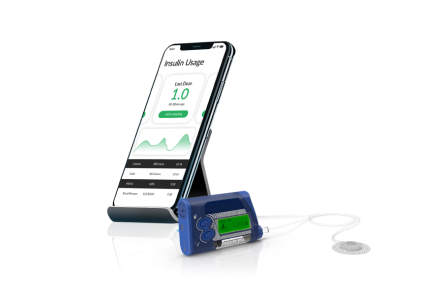
Now, let’s take a look at how medical device startups can use these trends to conquer the market. Here are the most innovative ideas for medical devices with real-life examples.
Idea 1. At-Home Diagnostic Devices
COVID-19 boosted the need for at-home diagnostics, and the popularity of such devices continues to rise. The global home diagnostics market will hit nearly $10B by 2032, up from $6B in 2022 (according to Precedence Research). Before the pandemic, RPM solutions mainly focused on seniors, helping them stay safe and alerting caregivers to incidents. But today, patients of all ages can keep track of their vital signs at home.
For one-third of patients, being able to share data from health devices is important. These devices track vital signs and send the information to doctors. For example, blood pressure cuffs enable doctors to keep track of patients with hypertension. Meanwhile, glucometers enable diabetes tracking.
Such devices also help patients take drugs on time. For instance, a continuous glucose monitor from Dexcom reminds diabetes patients to take their insulin.
In addition, there are a bunch of portable ECG devices that can detect abnormal heart rhythms in patients with heart problems. Another popular category of devices is focused on women’s reproductive health. You can also find devices that test obstructive sleep apnea on the market.
Real-life example. TytoCare is a US-based company that has created a connected device for virtual care. It allows anyone to perform self-examinations to reveal respiratory infections, ENT conditions, and more. This data is then sent to a clinician so that they can suggest treatment options and prescribe drugs.
The Tyto device is equipped with a thermometer and an examination camera. It also features an otoscope, stethoscope, and tongue depressor adaptors. The stethoscope, in particular, helps evaluate lung sounds for possible wheezing. To collect data, it needs to be connected to the Tyto device and held against the body. The solution prompts a clinician when wheezing is suspected.
TytoCare is a Series D startup with $156.7M in funding over seven rounds. The company has already received four FDA clearances. The most recent approval was for its wheeze-detection software.
Idea 2. Surgical Robots
Robots are transforming the way surgeries are performed. They give surgeons in the operating room more precision and control. Advances in visualization capabilities have created a superior view of the operating area. Meanwhile, AI has made surgical robots more flexible and autonomous. This has led to a greater variety of surgical robots by their areas of use and functions—and this variety will continue to expand, driving the market growth. According to Markets and Markets, the medical robot market will more than double between 2022 and 2027.
Perhaps the most well-known surgical robot is Da Vinci. It’s widely used for minimally invasive procedures like prostatectomies and colorectal surgeries. The surgeon simply controls the robotic arms, which are equipped with surgical instruments. Robots can assist doctors in many other types of surgeries, including neuro, eye, dental implant, and heart surgeries.
Real-life example. Moon Surgical is a French–American team that has created a robot, Maestro, to support surgeons in laparoscopy. The solution works as an extra pair of arms, giving the surgeon more precision and control throughout a procedure.
The Maestro system has two robotic arms that can hold laparoscopic tools such as cameras, probes, and instruments. During a procedure, a surgeon moves the laparoscopic tools, which are attached to the robotic arms. When the surgeon releases the tools, the robot continues to hold them in place. No more operating room assistants needed.
The solution doesn’t affect the workflow; it just offers a steady grip and boosts operating room efficiency. It’s also smaller than traditional robots in the operating room like the market leader da Vinci. Importantly, the Maestro robot helps reduce strain on surgeons: everything is under their control, which makes procedures more effective.
In 2021, Moon Surgical began a partnership with King’s College London, one of the pioneers in research in AI and data analytics. Their goal was to make Maestro smarter with machine learning capabilities. To achieve this, they planned to enhance the robot with surgical datasets that contain the movements and intentions of surgeons. Right now, there is no news on how successful this collaboration has been.
Maestro has completed its human trials in Belgium. In each of the 30 operations, the surgeon was able to complete the procedure without an assistant holding and manipulating the surgical instruments.
Moon Surgical is a Series B startup with $92.2M in funding. It received its first FDA clearance in 2022 and got European Union CE Mark approval in 2023.
Idea 3. Neurology Devices
A number of factors are driving the demand for neurology devices: the aging population, increasing head injuries, and the prevalence of neurological disorders. Nearly 90,000 people in the US are diagnosed with Parkinson’s disease each year. Neurostimulation devices can treat symptoms by regulating brain activity. According to Allied Market Research, the global market for neurology devices is set to grow exponentially—from $12.6B in 2021 to $27.2B in 2031.
A large variety of neurology devices are entering the market today. They help medical professionals diagnose, treat, and monitor patients. These devices include deep brain stimulators with electrodes implanted in the brain that can assist those with Parkinson’s or essential tremor. Another example is a device that measures the pressure inside the skull. It monitors the well-being of patients with traumatic brain injury.
Real-life example. Synchron is a US-based startup that has developed an endovascular brain–computer interface. It helps people who have lost their capacity to move or speak regain some independence. In particular, it helps them operate mobile devices and computers.
The solution is called Stentrode. It’s an implanted device that can access the brain using blood vessels. Electrodes or sensors placed into the blood vessels record activity from the brain. These signals are transmitted to a telemetry unit attached to a body and then sent to a computer. The computer interprets these signals and transforms them into different types of actions. For example, users can click on a monitor and send emails or shop online. According to its inventors, the solution works as a “brain Bluetooth” that can stream the user’s thoughts.
Today, Stentrode is for investigational use only. However, the solution has passed human clinical trials. Two people with paralysis regained their ability to text, email, and shop. The company continues to enroll patients for new trials.
Synchron is a Series C startup that has raised a total of $130M in funding over five rounds.
Idea 4. Orthopedic Devices
Living a sedentary lifestyle and obesity can cause muscle and bone problems to start early. The aging population, various orthopedic disorders, and a greater number of road accidents are additional factors in the growth of orthopedic issues. By 2028, the global orthopedic device market size will hit $48B (according to Markets and Markets).
A vivid example of an orthopedic device is an exoskeleton. This solution is attached to the user’s limbs and can assist people with a spinal cord condition or stroke in their daily lives. Plus, exoskeletons can act as rehabilitation robots, helping patients to relearn motor skills. With AI, an exoskeleton can read the environment and analyze movements during a rehabilitation session. It can also learn from the data it collects over time and use it to become smarter.
Real-life example. ABLE Human Motion is a medical device startup from Barcelona working on robotic exoskeletons. These solutions can help people with disabilities stand up, walk, and sit down.
The company created the ABLE Exoskeleton device for people with spinal cord injuries that affect the lower limbs. It’s a comparatively low-cost and lightweight solution, weighing just 17.6 lbs (8 kg). The device is equipped with inertial measurement units that can detect the orientation and acceleration of both legs. In this way, it can tell when a user wants to take a step forward. The device comes with a mobile app that collects data to drive a more personalized rehabilitation experience. The app tracks a user’s performance over time and enables them to adjust the device.
The device is now certified to be used in hospitals and rehabilitation centers, and the startup is working on a version for home use. The company’s aim is to make exoskeleton technology more accessible, and provide solutions for other patient groups, such as those with stroke, multiple sclerosis, and Parkinson’s disease.
ABLE Human Motion has raised a total of €2.1M in funding. In 2020, the company was recognized as one of the best startups at the European Robotics Forum. It also won the Toyota Startup Awards “Mobility for All” competition.
Medical Device Startups That Have Received Funds and Awards
According to Crunchbase, investments in medical device startups have totaled $35.7B since the beginning of 2018. One of the funding leaders from 2023 is Elon Musk’s Neuralink. The company is working on a brain implant to stimulate mental and physical activity. Restoring vision and helping people with paralysis walk again are its objectives.
Neuralink raised $280M in the Series D round right after the FDA accepted its request to begin clinical trials in humans.
However, recently, there haven’t been many deals like this. This is primarily because of the financial crisis and the fact that investors poured excessive funds into the market during COVID-19. According to Evaluate, venture capital funding reached $2.5B in the first half of 2023—the lowest first-half total since 2015. However, experts claim funding has reached its lowest point and that it will pick up. So, what solutions do investors still believe have potential? A Pitchbook report named surgical robotics, cancer care solutions, and precision medicine among others.
The following companies are among those that raised the most funds this year:
- Augmedics, a provider of AR surgical image guidance solutions
- HeartFlow, known for its AI non-invasive cardiac test that predicts heart attack risk
- Saluda Medical, a developer of a neuromodulation device that treats chronic pain
- Distalmotion with its surgical robot Dexter for general surgery, gynecology, and urology
Now, let’s look at merger and acquisition deals. There were just 42 deals closed in the first half of this year (with a total spend of $13.1B). For comparison, there were 81 deals in 2022 and 156 in 2021. However, that doesn’t mean there has been no room for megadeals. On the contrary, the average deal size has nearly quadrupled since 2018, reaching $1.2M in 2022. These are some of the big acquisitions in the medtech industry in recent years:
- Microsoft acquired Nuance Communications, a developer of an AI clinical notes app
- Johnson & Johnson took over Abiomed, a producer of minimally invasive, catheter-based heart pumps
- Stryker, a company with products and services in orthopedics and neurotechnology, acquired Vocera, the company behind a hands-free communication gadget for healthcare workers
- Bain Capital bought the microscopy division of Olympus to better focus on medical imaging technologies
Medical devices are always in focus at the Consumer Electronics Show (CES). The solutions below were listed as the most prominent tech innovators (and CES honorees) from 2023:
- The AeviceMD, a smart wearable stethoscope from Aevice Health. The AI device detects abnormal lung sounds in diseases like asthma. The sensor continuously analyzes chest sounds and logs parameters like respiratory rate, heart rate, and wheeze on an app.
- BioButton, a medical wearable for remote monitoring, from BioIntelliSense. It collects biometrics and vital signs like heart rate at rest and skin temperature from patients at home and in hospital.
- Proclaim Plus spinal cord stimulation system from Abbott. This implanted device relieves chronic pain. It sends mild electrical pulses to the nerves along the spinal cord to change the way the body recognizes pain signals.
- Reti-CV, an image-based tool that estimates the risk of developing a cardiovascular disorder, from Mediwhale. It scans the retina and, with the help of AI, predicts the risk of heart disease.
There’s no doubt that there’s still room for new medtech startups. And if you’re a newbie looking for ways to boost your startup, the Softeq Venture Studio is here to help. We mentor high-potential entrepreneurs, supporting them with business skills and tech expertise. We also help startups adhere to stringent regulations. For medical devices, we guarantee quality and safety while meeting industry regulations (ISO 13485). We also help them find strategic investors. Softeq is often a company’s first investor.
Summing Up
There is a growing number of health devices on the market, and beating back the competitors is an uneasy task. Money and recognition come to those who shape their ideas right and use a robust technology stack. Want to be one of them? We’re here to help. Whether you’re on the path to developing a medical device, or you’re only just thinking of creating one, Softeq can be your tech partner at any project stage.
More articles on the topic
